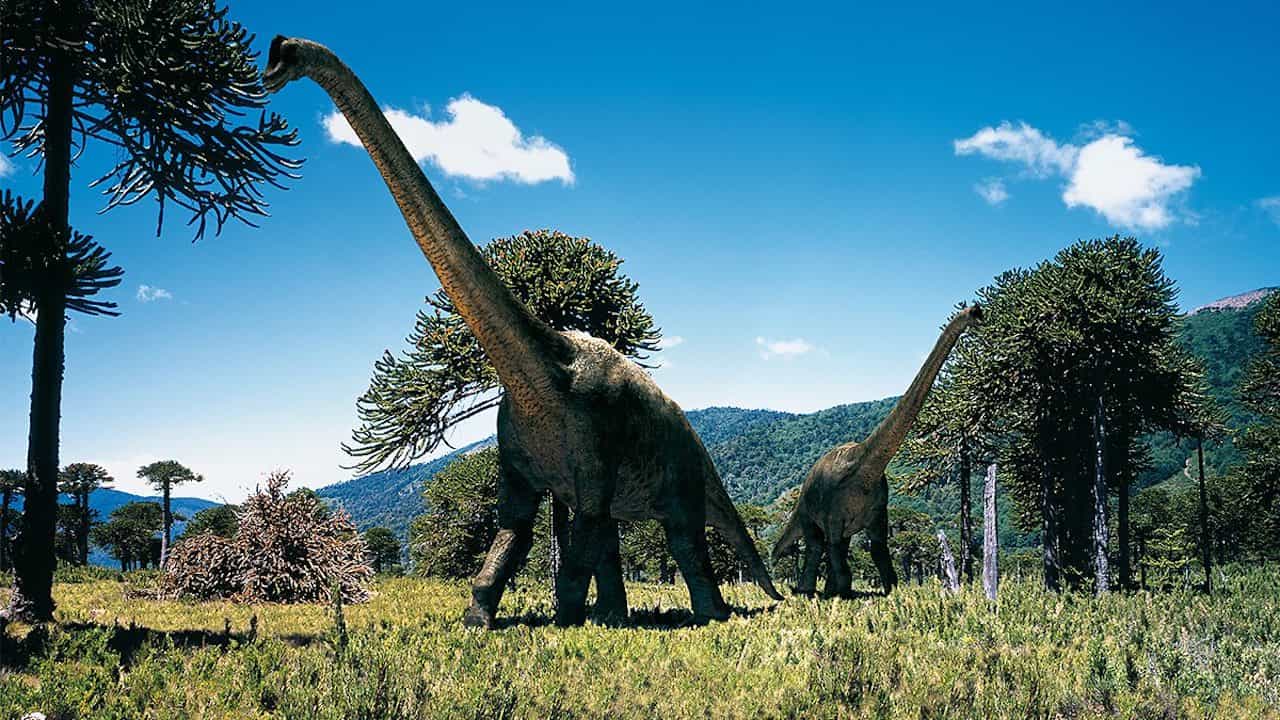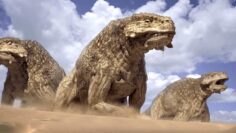Walking with Dinosaurs
Walking with Dinosaurs transports us back in time to the Mesozoic era, offering a vivid portrayal of prehistoric life. This six-part BBC series narrated by Kenneth Branagh brings extinct creatures to life through a combination of high-quality CGI and animatronics. It presents scientific theories about dinosaur behaviors and environments, spanning millions of years of Earth’s history.
Each episode focuses on different species and ecosystems, recreating the ancient world with meticulous attention to detail. The narrative style mimics that of traditional nature documentaries, presenting dinosaurs and other Mesozoic animals as living beings in their natural habitats. This approach allows for an immersive experience, offering insights into the daily lives, struggles, and interactions of these long-extinct creatures.
The series covers a wide range of prehistoric periods and locations. From the Triassic to the Cretaceous, it showcases the diversity of dinosaur species and their contemporaries. Viewers are introduced to iconic dinosaurs like the Tyrannosaurus rex and Diplodocus, as well as lesser-known creatures that shared their world. It also highlights the changing landscapes and climates that shaped dinosaur evolution over millions of years.
One of the key aspects of the series is its commitment to scientific accuracy. The behaviors and appearances of the featured creatures are based on the most up-to-date paleontological evidence available at the time of production. Fossil records, including bite marks and gut contents, inform the depiction of feeding habits and predator-prey relationships. Where direct evidence is lacking, the series draws parallels with modern animal behaviors to make educated guesses about dinosaur life.
The documentary not only focuses on the dinosaurs themselves but also paints a broader picture of the Mesozoic ecosystems. It showcases the diverse plant life that existed during this era, carefully avoiding elements like grass, which was not present during the time of the dinosaurs. It also explores the interactions between different species, from massive sauropods to tiny pterosaurs, illustrating the complex food webs and ecological relationships that existed in prehistoric times.
By presenting dinosaurs in this naturalistic context, the series helps to demystify these ancient creatures. It moves beyond the popular image of dinosaurs as movie monsters, instead portraying them as real animals adapting to their environments, searching for food, raising young, and facing the challenges of survival. This approach brings a sense of relatability to creatures that lived millions of years ago, fostering a deeper understanding and appreciation of Earth’s prehistoric past.









